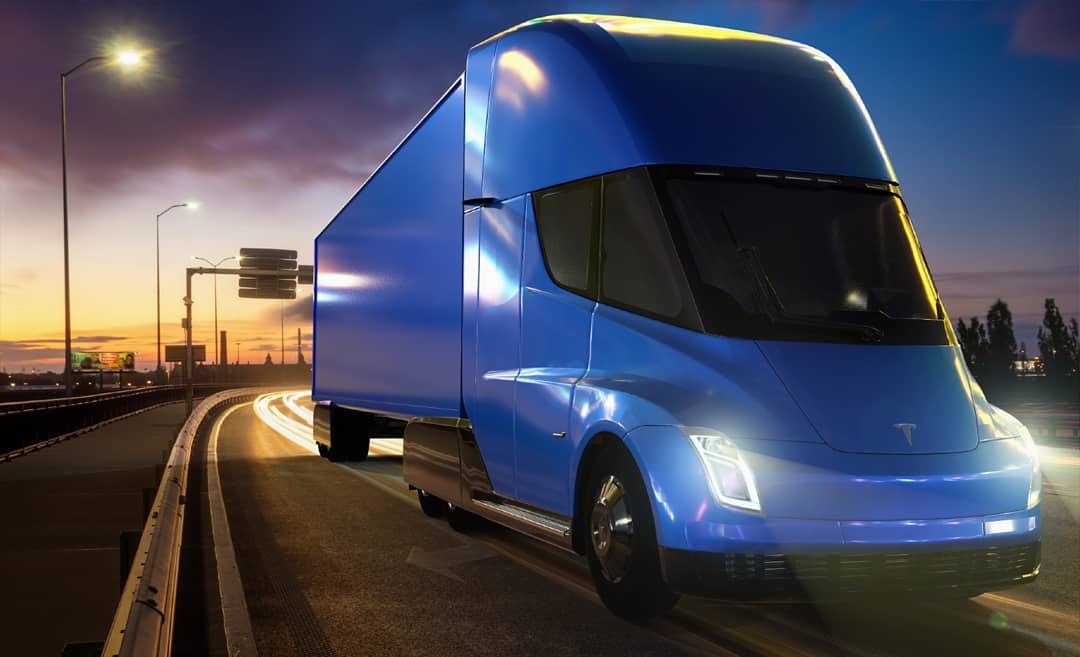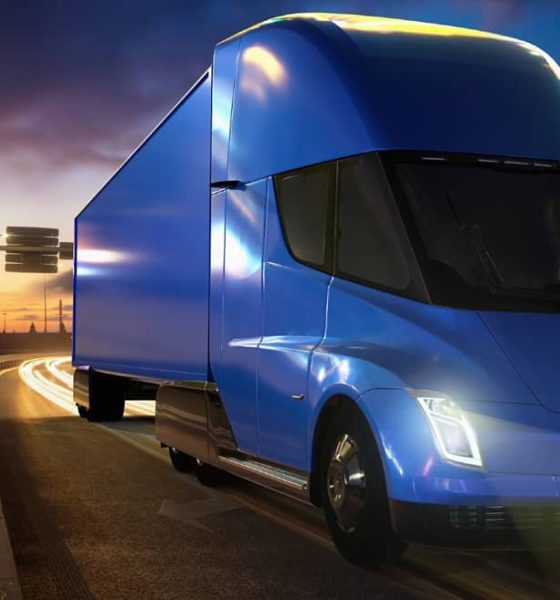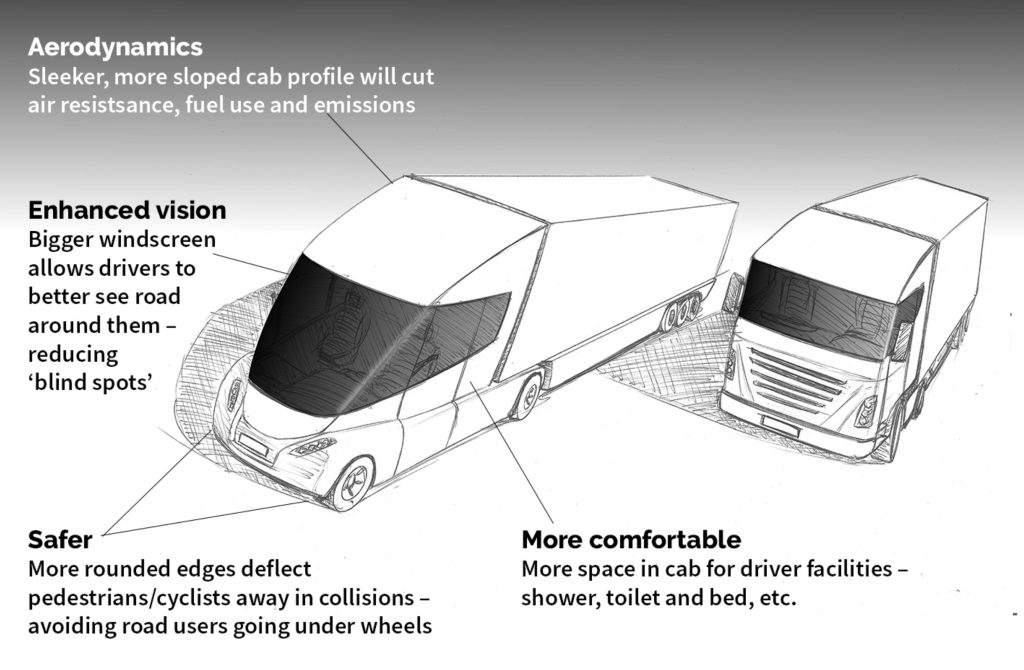

News
Tesla Semi & Convoy Mode are a perfect fit for EU Commission’s updated mobility strategy
The Tesla Semi and its Convoy Mode feature could gain a strong foothold in Europe now that the EU Commission has released its plans to promote sustainable and smart transportation options in the region. The EU Commission released its Sustainable and Smart Mobility strategy last week.
The strategy focused on three key factors, namely sustainability, smart mobility, and resilience. It included goals for the passenger car industry, but also prominently discussed making public transportation and heavy-duty vehicles carbon neutral.
Zero-Emission Lorries and the Tesla Semi
The EU Commission plans to have at least 30 million zero-emission cars and 80,000 carbon neutral lorries, or heavy duty trucks like the Tesla Semi, in operation by 2030. It will propose a revision in CO2 standards for cars and vans in Europe by June 2021 and review carbon standards for heavy-duty vehicles by 2022.
The EU Commission’s plans for zero-emission lorries puts the Tesla Semi in an advantageous position. Besides being carbon neutral, the Tesla Semi also aligns with the EU Parliament’s truck manufacturing law.

Last year, the EU Parliament voted for a law that required heavy-duty vehicle manufacturers to produce more aerodynamic, energy efficient trucks. Regulations in the law depicted a truck with 80-90 cm cabs and bigger windshields for a better view of the road. The European Federation for Transport and Environment released an illustration of the EU Parliament’s ideal heavy-duty vehicle design and it was very similar to the Tesla Semi.
Between the EU Commission and EU Parliament, it seems the game has been set for Tesla. The scales seems to tip more in favor for Tesla and the Semi when the Commission’s Smart Mobility plan comes into play.
Tesla Semi’s Convoy Mode in Europe
As for Smart Mobility, the EU Commission wants to proactively create favorable conditions for the development of new technologies. The Commission even stated that it would provide “all necessary legislative tools for their [new technologies’] validation.”
Support for autonomous vehicles is specifically mentioned in the EU Commission’s strategy, giving the Tesla Semi yet another advantage in Europe’s heavy-duty vehicle industry. Tesla’s advanced driver-assist software, Full Self-Driving, has been laid with some restrictions in Europe, but that may change in the future.
Tesla’s autonomous software development will definitely make it to the Semi and one feature in particular could be a gamer changer in the industry–Convoy Mode. Back in 2017, when Tesla unveiled the Semi, Elon Musk shared that the company’s Class 8 truck was already capable of Convoy Mode, which would allow multiple Semis to semi-autonomously draft in close proximity with each other. Since then, Tesla’s FSD and Autopilot software have gone through vast improvements, suggesting that Convoy Mode only improved as well.
Trucking veteran Sean Chenault was impressed by the Semi’s feature set and was particularly taken by Convoy Mode. “Having autonomous vehicles, you don’t need to pay a driver, and you don’t need to worry about hours of services,” he said. The trucking industry has been struggling with a shortage of drivers lately due mostly to safety concerns. Features like Convoy Mode have been one possible solution to solving driver shortage.
The Tesla Semi’s place in the EU Future
Chenault said the Semi was “a good thing for the trucking industry as a whole.” And it may be good for the EU Commission’s Sustainable and Smart Mobility strategy, too, specifically when it pertains to lorries.
Tesla’s business as an all-electric car maker would definitely benefit for the EU Commission’s new strategy. Tesla has already been gaining some more ground in Europe over the years with the Tesla Model 3. Next year could be another big year for Tesla in Europe with Giga Berlin and the release of the Model Y in the region. With the Semi in the picture, Tesla could cement itself as a key player in the region’s transportation sector.

News
Tesla shares epic 2025 recap video, confirms start of Cybercab production
The cinematic montage, posted by the official Tesla account on X, celebrated the company’s progress in EVs, energy, and Robotaxi development.

Tesla has released an epic year-in-review video for 2025, recapping some of its major achievements from refreshed models to autonomy breakthroughs and production ramps.
The cinematic montage, posted by the official Tesla account on X, celebrated the company’s progress in EVs, energy, and Robotaxi development while looking ahead to an even bigger 2026.
Tesla’s 2025 highlights recap
Tesla has had a busy 2025, as highlighted in the recap video. The video opened with Elon Musk explaining the company’s pursuit of sustainable abundance. A number of milestones were then highlighted, such as the rollout of FSD v14, Optimus’ numerous demos, the opening of the Tesla Diner in Hollywood, LA, the completion of the world’s first autonomous car delivery, and the launch of the Robotaxi network in Austin and the San Francisco Bay Area.
Tesla also highlighted several of its accomplishments over the year. As per the company, the Model Y was the year’s best-selling vehicle globally again, and Teslas became more affordable than ever thanks to the Model 3 and Model Y Standard. Other key models were also rolled out, such as the refreshed Model S and X, as well as the new Model Y, the new Model Y Performance, and the six-seat, extended wheelbase Model Y L.
The Megablock was also unveiled during the year, and the Supercharger Network grew by 18%. Over 1 million Powerwalls were also installed during the year, and the Cybertruck became the first EV truck to get both an IIHS Top Safety Pick+ award and an NHTSA 5-Star safety rating.
Cybercab production confirmed
Interestingly enough, Tesla also confirmed in its 2025 recap video that the production of the Cybercab has started. This bodes well for the vehicle, as it could result in the vehicle really being mass-produced in the first half of 2026. Elon Musk confirmed during the 2025 Annual Shareholder Meeting that Cybercab production should earnestly start around April 2026.
Musk has also noted that the Cybercab will be Tesla’s highest-volume vehicle yet, with the company aiming for an annual production rate of about 2 million units. “If you’ve seen the design of the Cybercab line, it doesn’t look like a normal car manufacturing line,” Musk said earlier this year. “It looks like a really high-speed consumer electronics line. In fact, the line will move so fast that actually people can’t even get close to it.”
News
Tesla Cybercab is changing the look of Austin’s roads, and it’s not even in production yet
Videos and photos showed the sleek, two-seat autonomous vehicles navigating traffic.

Even before entering production, Tesla’s Cybercab is already transforming the appearance of Austin’s streets, with multiple prototypes spotted testing in downtown areas recently.
Videos and photos showed the sleek, two-seat autonomous vehicles navigating traffic. Interestingly enough, the vehicles were equipped with temporary steering wheels and human safety drivers.
Recent Cybercab sightings
Over the weekend, enthusiasts captured footage of two Cybercabs driving together in central Austin, their futuristic silhouettes standing out amid regular traffic. While the vehicles featured temporary steering wheels and side mirrors for now, they retained their futuristic, production-intent exterior design.
Industry watcher Sawyer Merritt shared one of the vehicles’ videos, noting the increasing frequency of the autonomous two-seater’s sightings.
Previewing the autonomous future
Sightings of the Cybercab have been ramping in several key areas across the United States in recent weeks. Sightings include units at Apple’s Visitor Center in California, the Fremont factory test track, and in Austin’s streets.
The increased activity suggests that Tesla is in overdrive, validating the autonomous two-seater ahead of its planned volume production. Elon Musk confirmed at the 2025 Shareholder Meeting that manufacturing begins around April 2026 with ambitious targets, and during an All-Hands meeting earlier this year, Musk hinted that ultimately, Tesla’s factories should be able to produce one Cybercab every 10 seconds.
News
Tesla celebrates 9 million vehicles produced globally
The achievement, announced by Tesla Asia on X, celebrated not just the Shanghai team’s output but the company’s cumulative production across all its factories worldwide.

Tesla has achieved a new milestone, rolling out its nine millionth vehicle worldwide from Giga Shanghai.
The achievement, announced by Tesla Asia on X, celebrated not just the Shanghai team’s output but the company’s cumulative production across all its factories worldwide. The milestone came as 2025 drew to a close, and it inspired praise from some of the company’s key executives.
Tesla’s 9 million vehicle milestone
The commemorative photo from Tesla Asia featured the Giga Shanghai team assembled on the factory floor, surrounding the milestone Model Y unit, which looked pristine in white. The image was captioned: “Our 9 millionth vehicle globally has just rolled off the production line at Giga Shanghai. Thanks to our owners and supporters around the world.”
Senior Vice President of Automotive Tom Zhu praised Tesla’s factory teams for the remarkable milestone. He also shared his gratitude to Tesla owners for their support. “Congrats to all Tesla factories for this amazing milestone! Thanks to our owners for your continued support!” Zhu wrote in a post on X.
Giga Shanghai’s legacy
Tesla’s nine million vehicle milestone is especially impressive considering that just 207 days ago, the company announced that it had built its eight millionth car globally. The eight millionth Tesla, a red Model Y, was built in Giga Berlin. The fact that Tesla was able to build a million cars in less than seven months is quite an accomplishment.
Giga Shanghai, Tesla’s largest factory by volume, has been instrumental to the company’s overall operations, having reached four million cumulative vehicles earlier in 2025. The plant produces Model 3 and Model Y for both domestic Chinese and export markets, making it the company’s primary vehicle export hub.








